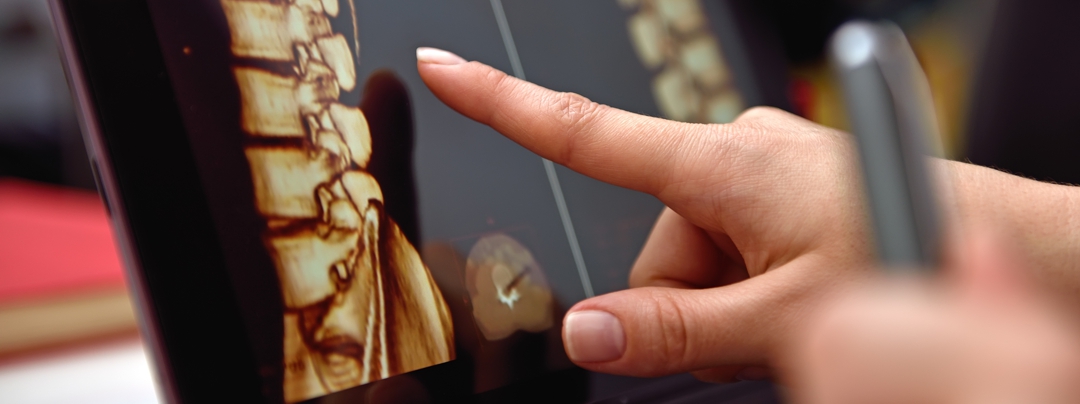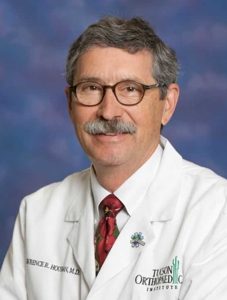Mrs. Green’s World is a platform that not only educates people about the health of the planet, but also encourages all of us to consider various options to create healthy, sustainable communities. We are proud to partner with Tucson Medical Center, which has been Tucson’s locally governed nonprofit regional hospital for more than 70 years. Because TMC is committed to empowering patients to be active partners in their care and has a robust wellness outreach program, we are sharing TMC’s message. To learn more, please listen to our special podcast series, sponsored by Tucson Medical Center.

It is often assumed that osteoporosis is a health challenge that only affects women. While the bone disease is a notable challenge for women, it is also a serious health concern for men.
Brittle bones and fractures do not have to be a part of aging. It is important to know the risks, and engage opportunities to maintain optimum bone-health – for both men and women.
Dr. Lawrence R. Housman is an orthopaedic surgeon who specializes in musculoskeletal disease at Tucson Orthopaedic Institute. He sat down with us to discuss the best ways to prevent and treat osteoporosis.
Are women at greater risk for osteoporosis?
Women start with a lower bone density than men and lose bone mass more quickly as they age. Between ages 20-80, women will lose about 1/3 of her bone density. Estrogen levels also affect bone density, and women lose bone mass more quickly in the years immediately following menopause than at any other time of their lives.
Does that mean men don’t have to worry about osteoporosis as they age?
No, the incidence of osteoporosis is increasing in men. About 20-25 percent of osteoporotic fractures occur in men. The lifetime risk of an osteoporotic fracture in men older than 50 years of age is 27 percent. Osteoporotic fractures are more common in men and can lead to higher rates or mortality.
What can accentuate this risk?
Alcohol in moderation is not a risk factor, however more than four drinks per day results in a twice the risk of hip fracture.
Long term use of steroids will double the risk of fracture in women. It should be noted that proton pump inhibitors (e.g. Nexium/Protonix used for stomach disorders such as acid reflux) decrease the absorption of calcium from the stomach.
While increasing fiber, phylates (beans, wheat bran), oxalates (spinach, beet greens, rhubarb) provide other health benefits; however in excessive amounts can also interfere with calcium absorption. Cola drinks interfere with calcium metabolism.
What are the most effective means of preventing osteoporosis?
Regular exercise is one of the most effective means of preventing osteoporosis. Thirty minutes per day – walking is excellent, and Tai Chi reportedly decreases falls by 47 percent and hip fracture by 25 percent.
Nutrition is another import part of maintaining healthy bones. Fruits and vegetables are important. Women ages 19-50 should take in 1000 mg of calcium daily and women over 51 should get 1200 mg per day.
Vitamin D is another vital nutrient the body needs to prevent osteoporosis. An individual can get their vitamin D through measured exposure to sunlight or through supplements. A diet with dairy, protein or calcium fortified foods (e.g. orange juice), fish (salmon/sardines) and yogurt (6 ounces has 300 mg of calcium) will go a long way in getting vitamin D into the bones.
What are the warning signs of the disease – and when is it time to see a doctor?
There are usually no warning sign before a fracture occurs; therefore, the most important factor is prevention.
A primary care provider (PCP) is the best person to monitor bone health. Most physicians recommend a DEXA (bone density test) after the age of 50.
The DEXA scan is the bone density test done and is predictive of fracture risk. The DEXA scan report will show whether you have normal bone density, osteopenia (bone is becoming weaker) or osteoporosis (bone is at high risk for fracture).
If diagnosed with osteopenia or osteoporosis – what’s next?
With treatment patients can live normal, active and happy lives. There are many types of medications that are now available – which work to reverse and then rebuild the bone loss. With treatment, the risk of a vertebral fracture drops from between 30-70 percent and the risk of a hip fracture drops by up to 40 percent.
About the Author
 Dr. Housman is an orthopaedic surgeon who practices at the Tucson Orthopaedic Institute. He earned a medical degree from the University of Alberta in Edmonton, Canada and completed an orthopaedic surgery residency at the Montreal General Hospital and McGill University. Dr. Housman is fellowship trained in several orthopaedic pursuits and is a past chief of staff at Tucson Medical Center. He has also served as president of the Western Orthopaedic Association and Arizona Orthopaedic Society.
Dr. Housman is an orthopaedic surgeon who practices at the Tucson Orthopaedic Institute. He earned a medical degree from the University of Alberta in Edmonton, Canada and completed an orthopaedic surgery residency at the Montreal General Hospital and McGill University. Dr. Housman is fellowship trained in several orthopaedic pursuits and is a past chief of staff at Tucson Medical Center. He has also served as president of the Western Orthopaedic Association and Arizona Orthopaedic Society.